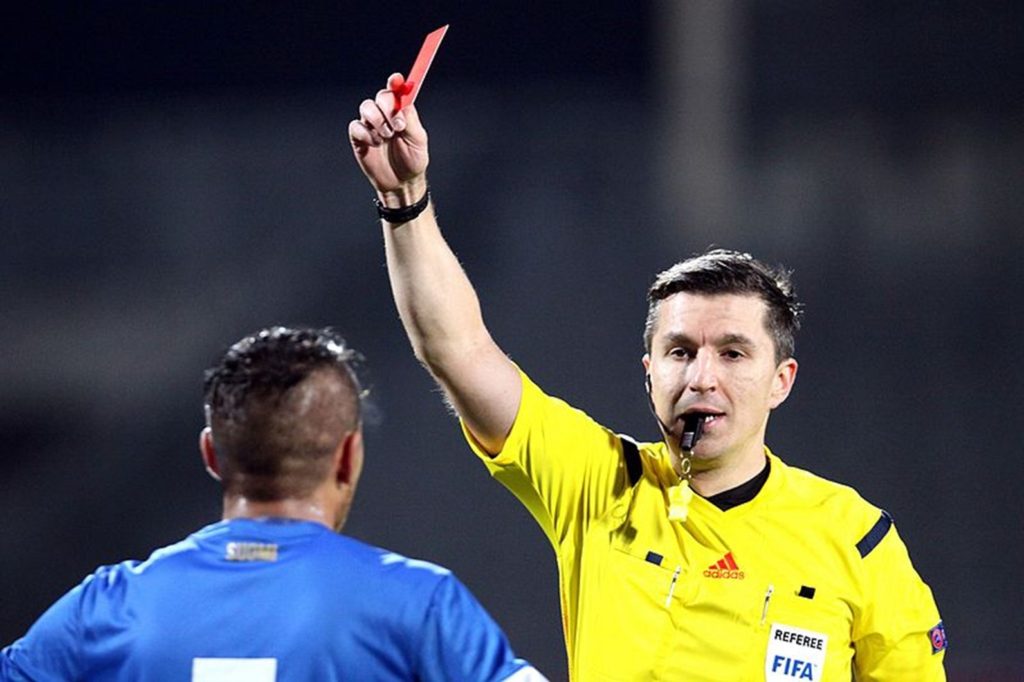The Video-Assistant Referee, popularly known in football as VAR, was brought into practice by the English Premier League for the first time in the season on 2019-20.
One year hence, the Football Association (FA) has decided to stick with the technology but has made some changes to the original rules laid down by FIFA for the English leagues to follow. This has been highly criticized by the pundits and coaches in England. A lot of decisions made basis the VAR have been questioned and raised a lot of controversies so let us have a look at what the VAR really is and how it works.
The rules of the VAR as per the FIFA guidelines that were adopted to improve the game were to aid the referee in making decisions regarding the correction of “clear and obvious errors” during a game. It is to be used for three main incidents (plus one administrative) that have been identified as game-changing.
1) Goals: The role of the VAR is to assist the referee in determining whether there has been an infringement that would disallow a goal.
2) Penalties: The role of the VAR is to ensure that no “clearly wrong” decisions are made with respect to awarding a penalty or ruling it out.
3) Red Card Incidents: The role of the VAR is to ensure that no “clearly wrong” decisions are made with respect to sending off a player or not.

4) Mistaken Identity: This administrative incident occurs when the referee sends off the wrong player or sanctions the wrong player for a foul. The VAR would then step in and communicate to the referee to rectify the decision or inform him of the right player to be sanctioned.
How does the VAR work?
- An incident occurs, the referee is not sure of the incident so then asks the VAR to check or vice versa.
- After this step, the video footage is reviewed by the VAR who then advises the referee on what he sees.
- Finally, the referee decides to either accept the VAR’s advise or can choose to review the video footage himself before making his final decision.
The VAR Premier League Rules for the 2019-20 Season
The Premier League rules were almost the same as the originally drafted guidelines set by FIFA but different.
- The VAR would come into play for goals, penalties, red cards and mistaken identity but decisions would only be reversed if they are “clear and obvious errors”.
- No “matters of fact”, that is, offsides, ball out of play, etc. would be required for review by a referee and would be handled by the VAR.
- Assistant referees (linesmen) would indicate offsides but referees may wait to see an attack unfold before blowing the whistle. Players have been asked to play to the whistle and not the flag.
There was a lot of controversy last season as well around the VAR and many contentious decisions occurred. The biggest decision being the failure of the PL Hawk-Eye, which potentially cost Sheffield United a spot in the Europa League and contributed to Aston Villa staying in the Premier League.
The VAR Premier League Rules for 2020-21
The FA reviewed the VAR rules from last season and have made amendments to try and ensure better and fairer results.
- Referee Review Area (RRA): The Premier League will feature a VAR Screen at the side of the pitch where referees themselves can watch the replay of incidents and give decisions on goals, red cards, and penalties. This was the practice in the European competitions that did not exist last season in England.
- Goalkeepers Must Stay on The Line: For penalty kicks, it is mandatory for goalkeepers to have at least one foot on the line at the time of the penalty kick. Failure to do so would result in a penalty retake if the penalty is saved by the goalkeeper. In case the penalty taker misses the target or scores, there would be no retake.
- Offsides: The assistant referees (linesmen) have been directed to raise their flag for offside only after the end of the attack. If the attack leads to a goal, only the VAR can take a call on the offside.





